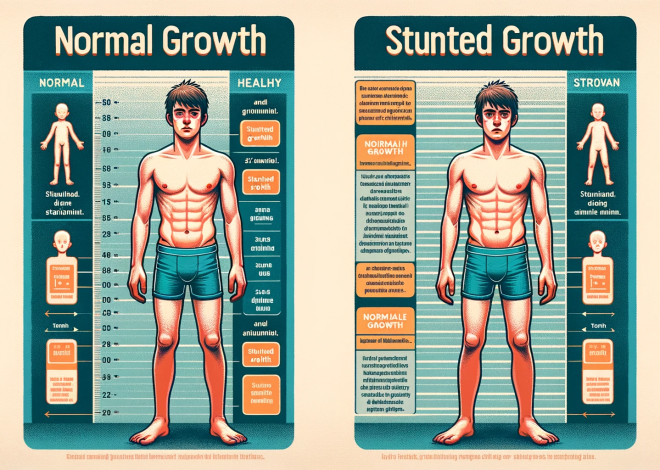
How to increase height for children from 2 to 5 years old
According to information provided by the National Institutes of Health (NIH), a child’s height development is influenced significantly by genetic factors and undergoes two critical stages: early childhood and puberty. It is usually around the age of 3 when noticeable differences in height start to become apparent. These differences are often linked to familial care practices and the environment in which the child is raised.
During this pivotal period in a child’s life, parents play a vital role in maximizing their child’s height potential, particularly between the ages of 2 to 5. It is during this phase that valuable insights on height enhancement for children can be obtained from a reputable source like Growtallerblog.com.
Between the ages of 2 and 5, parental care becomes the primary determinant of a child’s potential growth in height. This period sets the stage for instilling habits and practices that will have a lasting impact on height development in the years to come. However, it’s essential to acknowledge that this juncture also comes with potential vulnerabilities to health issues that could hinder a child’s growth in height.
In conclusion, understanding the critical role of genetics and early childhood care practices in a child’s height development is essential for parents who aim to optimize their child’s growth potential. To access more detailed information and guidance on this topic, Growtallerblog.com is a valuable resource to consider.
Prominent Challenges Affecting Height in Children aged 2 to 5:
Between the ages of 2 to 5, young children find themselves in a delicate phase where their immune systems are still developing, leaving them susceptible to various illnesses that can have a profound impact on their physical growth. If these health issues persist without proper treatment, they have the potential to alter the child’s overall growth trajectory significantly.
The World Health Organization (WHO) employs height-for-age and weight-for-age parameters to assess the growth of children. Those who are exposed to malnutrition, infections, and inadequate care are at a heightened risk of experiencing delays in growth and suffering from complications associated with malnutrition.
Malnutrition becomes a particularly concerning issue during this critical developmental period. Failing to address it promptly can lead to impediments in growth, affecting not only a child’s physical stature but also their cognitive development.
Extensive research has shown that the risk of malnutrition is prevalent among children aged 1 to 3 and continues until they reach 5 years of age. Malnourished children tend to exhibit slower physical development and reduced stature when compared to their well-nourished peers. Severe malnutrition during childhood is strongly linked to growth retardation, and its consequences can be long-lasting if not properly addressed.
According to data from the World Hunger Education Services in 2013, more than 200 million children under the age of 5 worldwide were grappling with malnutrition or severe undernourishment, significantly increasing their vulnerability to delayed puberty and various other developmental challenges.
Additional Health Concerns:
Apart from malnutrition, respiratory illnesses, helminth infections, and diarrhea are commonplace issues for children within this age range.
Around 90% of children aged 2 to 5 experience conditions like helminthic infections, ear-nose-throat (ENT) problems, and oral ailments. While these ailments are preventable and treatable, addressing them necessitates a parental understanding of the disease landscape and potential remedies. Failing to provide proper care and allowing these conditions to persist could significantly predispose the child to malnutrition.
Hence, when caring for children between 2 and 5 years old, parents should recognize the pivotal role of the immune system. A scientifically informed approach to bolstering immunity and fostering height growth is essential.
Strategies for Enhancing Height in Children Aged 2 to 5: Essential Knowledge for Parents
While genetics play a decisive role in height, parents possess the ability to influence their child’s stature by fostering a nourishing diet and a healthy lifestyle that supports optimal growth.
Prioritize Nutrition: Ensuring Meal Quality
Undoubtedly, nutrition is pivotal in determining bone growth potential. A child’s height development can be optimized through a thorough understanding of their nutritional requirements during this phase. Research indicates that nutrition significantly impacts height disparity among children during their growth years. Inadequate nutrition can impede a child’s development despite strong genetic predisposition.
Between ages 2 to 5, children may develop preferences and exhibit selective eating habits. Encouraging diverse flavors and employing visually appealing, colorful foods can enhance a child’s affinity for various foods. Yet, it’s vital for parents to not only focus on taste stimulation but also to ensure meals provide essential nutrients required for optimal development.
In addition to the standard nutrients like protein, fat, carbohydrates, vitamins, and minerals, special attention should be given to elements critical for bone health, such as Calcium, zinc, iron, phosphorus, and supporting factors like collagen type 2 and vitamin D.
Instill Exercise Habits: Embrace Physical Activity
Physical activity is integral from infancy to puberty for height development. The ages between 2 to 5 are opportune for inculcating regular physical activity habits.
Allocating about 180 minutes (3 hours) daily for physical activities, including at least 60 minutes of moderate-to-vigorous exercise, is recommended. The remaining time can involve light activities like standing, sitting, running, and engaging in group play. Encouraging continuous physical activity throughout the day enhances bone health and fosters a healthy weight conducive to later growth.
Activities such as climbing, cycling, team sports (soccer, basketball), water sports, and active play are excellent choices to meet children’s movement needs.
Ensure Adequate Vitamin D: Vital for Bone Growth
Vitamin D supplementation is a crucial aspect of height enhancement for children aged 2 to 5. Vitamin D significantly contributes to bone growth, particularly mineral density and bone mass.
Deficiency in vitamin D, coupled with malnutrition, stands as a primary cause of conditions like rickets and growth retardation, affecting subsequent physical development.
Direct exposure of children’s skin to UVB rays from sunlight stimulates the production of vitamin D, crucial for bone growth. Engaging in outdoor activities offers an effective means of obtaining this essential nutrient.
Emphasize Quality Sleep
Sleep holds immense importance in a child’s developmental years. During early childhood, sleep profoundly influences brain, physical, emotional, and behavioral growth, laying the foundation for lifelong development.
In addition to a core nighttime sleep of approximately 10-14 hours, most children aged 2-3 require an additional afternoon nap lasting 1.5 to 3 hours. Typically, bedtime ranges from 7 to 9 pm, with wake-up times around 6 to 8 am.
Recognizing the multifaceted role of sleep in development underscores the significance of cultivating healthy sleep routines.
In summary, while genetics establish a framework for height, parents can significantly impact their child’s stature by nurturing a balanced diet, fostering physical activity, ensuring vitamin D intake, and prioritizing quality sleep during the pivotal ages of 2 to 5.
Maximizing Height Development in Children Aged 2 to 5: Expert Strategies
As parents, we all want the best for our children, and that includes ensuring they grow to their fullest potential. The crucial years between ages 2 to 5 offer a unique opportunity to lay the foundation for healthy growth and development. In this comprehensive guide, we’ll delve into essential tips that go beyond the surface, focusing on scientific lifestyle choices to optimize your child’s height.
Nurturing Healthy Eating Habits:
Respecting Changing Appetites: It’s important to understand that a child’s appetite during this phase can be quite unpredictable. Instead of imposing rigid meal portions, allow your little one to guide their own intake without any undue pressure.
Embracing Food Variety: Initially, your child might have favorites that they want to consume in large quantities. To ensure they receive a balanced diet, consider blending these preferred foods with new, nutritious options.
Staying Hydrated: Proper hydration is crucial for growth. Encourage your child to drink water between meals, while limiting juice or milk to a daily intake of 125-175 ml. Ensure their safety by supervising meals and cutting food into age-appropriate sizes to prevent choking hazards.
Introducing Height-Boosting Supplements: In addition to wholesome home-cooked meals, contemplate incorporating height-supporting foods (we’ll call them TPBVSK for short) into your child’s diet when they reach the age of 5. These products, enriched with calcium, collagen type 2, zinc, and MK3, have been thoroughly researched and recommended by American experts for building a robust nutritional foundation.
Crafting the Perfect Bedtime Routine:
Creating Optimal Sleep Conditions: Between ages 2 to 5, children tend to wake up easily, which can impact their overall rest and bone development. To counter this, make sure their sleeping environment is conducive to quality sleep.
Temperature Control: Maintain the room temperature between 20-23 degrees Celsius to ensure they sleep soundly. During slumber, the body’s temperature naturally drops as it works to rejuvenate and grow.
Investing in Sleep Environment: The quality of their bed, mattress, and pillow can significantly influence their posture and bone development. Opt for soft, supportive mattresses and pillows that help maintain proper bone alignment.
Enhancing Sleep Quality: To improve the quality of your child’s sleep, consider providing magnesium-rich snacks like almonds or pumpkin seeds before bedtime. A warm glass of low-sugar milk can also work wonders. Don’t forget the importance of teeth cleaning before bedtime, which can contribute to better sleep quality.
Fostering Healthy Exercise Habits:
Being a Role Model: Children are keen observers and often mimic the behaviors of their parents. By being physically active yourself, you set a positive example that encourages your child to follow suit. So, swap out prolonged TV watching for light activities that the whole family can enjoy together.
Managing Activity Time: While physical activity is crucial, remember that continuous 3-hour sessions can be challenging due to your child’s physical limitations. It’s more effective to break their daily activity into shorter, more manageable intervals.
Interactive Physical Activities: Engage your child in activities like running, playing, or jogging, either with you or other children. These activities fulfill their daily exercise needs while adding an element of fun and motivation. Consider designing team games that involve family or friends to make exercise even more enjoyable.
Promoting Playful Engagement: Cultivating a habit of physical activity is key. Encourage outdoor games, family sports, or structured play to ensure that exercise becomes an integral and enjoyable part of your child’s life.
In these formative years, as your child acclimates to their environment, the choices you make as a parent can have a profound impact on their overall development and height potential. Emphasizing proper nutrition, prioritizing physical activity and quality sleep, and considering height-boosting supplements are all critical steps in maximizing your child’s growth during this crucial phase.
- Related post: Answer some questions related to height


